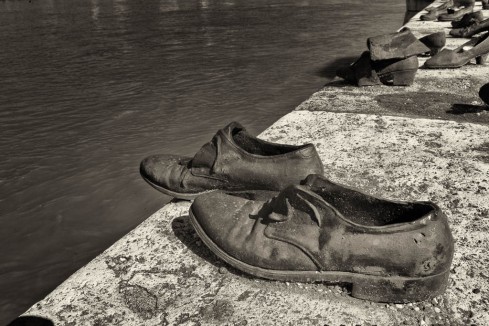For longtime readers of this space, you will find it a bit unusual that we are travelling on a ‘group trip’. If I were telling this to you in person, I might even demonstrate the ‘half-quotes’ with a little smirk. But for this trip it is not only appropriate, but worthwhile. Escorted by our temple’s Cantor, we are accompanied by about 20 of its members through three important eastern European cities to learn about their histories’ from a Jewish point of view.
To some, this may not be important, and even segregationistic, but to me it is not. The story of our people interests me, the activities surrounding the murder of over six million people during the war remains something I believe we must constantly study and discuss, and there is much to learn, and re-learn.
Our journey will be limited. First Budapest, a city of great beauty, warm people and a sinister Jewish story. Then to Krakow, Poland where we will visit Auschwitz-Birkenau, the death camp (just think about that phrase for a moment, not a tennis camp or space camp…a death camp). I will also endeavor to find my grandmother’s home town of Działoszyce, Poland, where she lived until the age of about 16 when she departed, alone, for America in 1917. And finally to Warsaw, the location of the Warsaw ghetto uprising when a few hundred Jews, armed with some pistols, stones and courage defied the Nazi army for a few days because they just wouldn’t go down without a fight.
I promise some new photos and reflections from each location, and I will try to make each entry enjoyable to read, even if the subject matter isn’t always.
This is my second time to Budapest so rather than review the city again, I’ll refer you to this previous blog entry. Today though, I’m in Budapest in a different way. The first thing that came into consciousness as we walked through the old section where the synagogue still stands, is a notion that we all take for granted. That idea that family stories, traditions, recipes, photos get passed down from generation to generation. Like my grandfather did for me, and maybe yours for you. But the Jews of Budapest don’t have grandfathers and grandmothers to pass down stories from. The Jews of Budapest they are writing their own stories now. Just one of the reasons why is the story I’ll tell you now. It refers to what happened after the Nazis left Budapest. By the winter of 1944, the end of the war was near (it would be over in March 1945) and the Nazis needed resources on the western front. As they departed Budapest to redeploy, they left in charge a Hungarian force known as Arrow Cross. It had just been a few months since the Nazis had actually established a Jewish ghetto in Budapest, the last one they created in fact, but when they left the Arrow Cross in charge there was a new sheriff in town.
It was winter and in Eastern Europe, that means cold and windy along the nearly frozen Danube. The Arrow Cross took the opportunity to march about 20,000 Jews from the ghetto between December ’44 and January 1945 and line them up at the edge of the river, facing the water. Now remember this was near the end of the war and supplies were getting scarce. Among the Nazis it was well regarded that a Jew wasn’t worth the cost of a bullet, so the frugal Arrow Cross tied Jews together, two at a time, so that with one bullet they could kill one and drown the other.
In they fell into the frigid water. First two, then two more, and two more until there were 20,000 fewer Jews. This action was memorialized by sculptor Gyula Pauer and filmmaker Can Togay in Shoes On The Danube Bank. Here it is as it looked today. Standing in silence as the water rushes by it does take me back to a time I hope we never see again.

Leave a comment